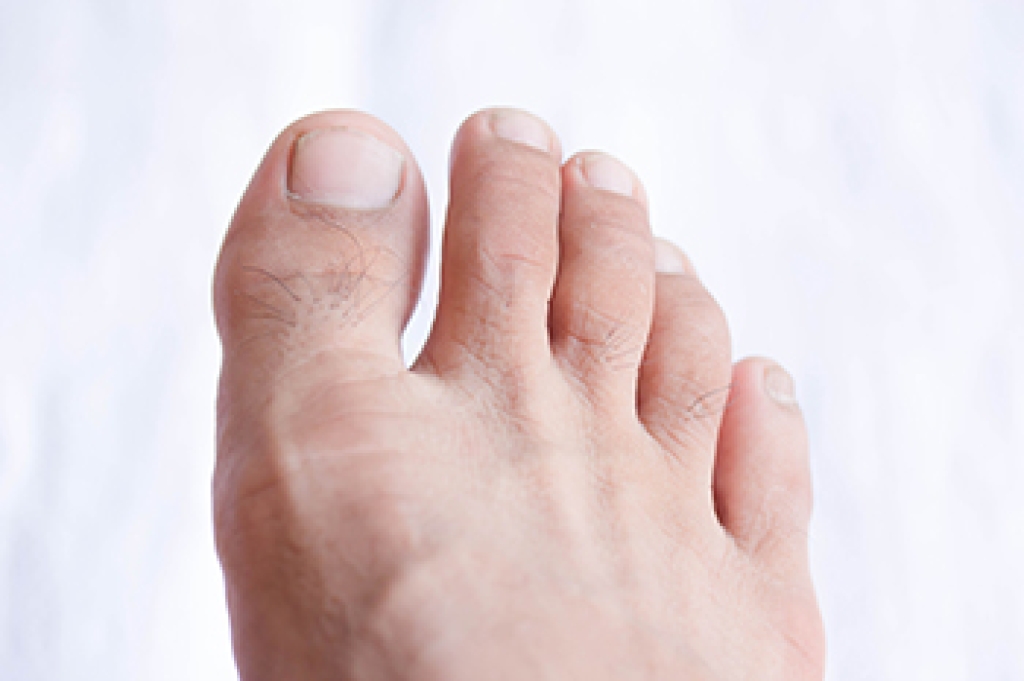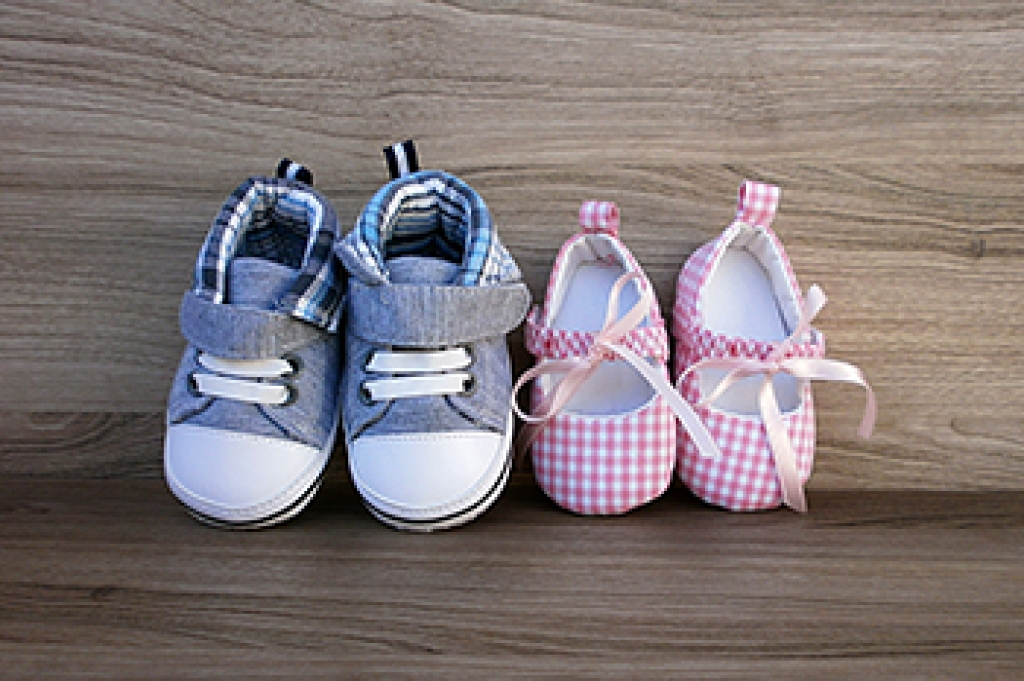Causes and Treatment of Toenail Problems

Toenail problems can develop from infection, injury, or poor foot care, and they often result in pain, discoloration, or changes in nail shape. Common toenail issues include fungal infections, which cause nails to thicken, yellow, or crumble. They usually require prescription antifungal medication, or, in some cases, nail removal. Ingrown toenails occur when the edge of the nail grows into the surrounding skin, often due to trimming the nail too short or wearing tight shoes. These may be treated by gently lifting the nail or removing a portion of it. Trauma from stubbing the toe or repetitive pressure, such as from running, can cause dark discoloration, bleeding under the nail, or detachment. Split or torn toenails may need to be trimmed to prevent further damage. Discoloration from nail polish or dyes usually resolves as the nail grows out. If you have painful toenail problems, it is suggested that you schedule an appointment with a chiropodist for expert advice.
Toe pain is common and can have a variety of causes. Causes can range from a broken toe to an ingrown toenail. Many types of toe pain can be corrected, but any toe pain that inhibits your activities for an extended period should be discussed with a chiropodist. If you suffer from toe pain, please consult with one of the chiropodists from The Footcare Centre. Our chiropodists can help you maintain the health of your feet.
Common Causes of Toe Pain
- Trauma or fracture
- Cuts, sores, or bruises
- Rheumatoid arthritis
- Gout
- Turf Toe
- Morton’s neuroma
- Blisters
- Corns
- Bunions
- Hammertoes
- Ingrown toenails
- Plantar warts
- Athlete’s Foot
Symptoms of Toe Pain
- Toe deformity
- Burning
- Numbness
- Toenail deformity
- Wart or ulcer
- Swelling
- Redness
When to See a Chiropodist
- Bleeding or severe swelling
- Trauma, such as a broken bone
- Discoloration or extreme swelling
- Inability to bear weight
- Persistent pain
- Wounds that won’t heal
Diagnosis of Toe Pain
A chiropodist can conduct a thorough examination of the painful toe or toes in order to determine the best course of treatment. The exam may include assessing the tenderness of the area, taking an X-ray or other diagnostic test, or assessing your gait and range of motion. A discussion of what led to the advanced pain issue may follow. Included will likely be a health history, as well as a list of medications you are taking and other previous injuries you may have sustained.
Treatment for Toe Pain
With such a wide range of possible causes for toe pain, treatment can be varied in scope and length. Sometimes, the chiropodist will recommend lifestyle and activity changes. In cases of trauma or other injuries, X-rays or imaging tests will likely be used to determine the severity of the problem, particularly if any bones have been broken. Treatment may also include injections of pain-relief medication or anti-inflammatory drugs. Certain injuries will require the splinting, bracing, or wrapping of injured toes. Orthotics or special shoes may be prescribed in cases of bone deformities and gait issues. Removal of warts, calluses, and corns may be needed. In other cases, such as with patients who have diabetes or rheumatoid arthritis, ongoing treatment may be required to avoid more serious problems.
If you have any questions please feel free to contact our office located in Niagara Falls, ON .
A Chiropodist’s Guidance on Choosing Shoes for Babies

Babies do not need shoes until they begin walking on their own outdoors. Before this stage, bare feet or soft booties are best to help their feet develop naturally and strengthen. When it is time for shoes, they should be lightweight, flexible, and have non-skid soles to provide support and prevent slipping. Proper fit is essential, allowing room for growth without being too loose or tight. Shoes that restrict natural movement can affect balance and foot development. A chiropodist can assist by evaluating your baby’s foot structure, checking for any abnormalities, and offering advice on the best shoe options. If you notice any abnormalities in your child’s feet, it is suggested that you contact a chiropodist who can treat various foot conditions, and offer additional guidance on choosing proper footwear.
If your child is experiencing foot or ankle pain, please consult with one of the chiropodists from The Footcare Centre. Our chiropodists will assess your condition and provide you with quality foot and ankle treatment.
Common Causes of Foot Pain in Children
While children can experience many of the same foot problems as adults do, some foot problems may be more common during childhood.
Causes of foot pain in children can include:
- Deformities that are present from birth, such as flat feet or clubfoot
- Sever’s disease, which is an inflammation of the growth plate in the heel bone
- Various sports injuries, such as sprains and fractures
- Ingrown toenails
- Athlete’s foot
- Plantar warts
Prevention
It is important to look after the health of children’s feet in order to prevent future problems from arising. Keep your child’s feet clean and dry, trim their toenails regularly, ensure their shoes fit properly, and keep a watchful eye on any symptoms of foot pain, such as limping. If you notice any symptoms or if your child complains of foot pain, a chiropodist can help.
If you have any questions please feel free to contact our office located in Niagara Falls, ON .
Understanding the Many Causes of Heel Pain in Children

Heel discomfort in children is often blamed on growing pains, but there are several reasons this pain can appear. While one common cause involves irritation in the heel’s growth area during active growth periods, and it is not the only explanation. Children may also develop pain from strained tendons, inflammation of the tissue on the bottom of the foot, or even minor bone stress. Wearing shoes that lack support or suddenly increasing physical activity can also play a role. The source of heel pain can vary widely based on age, activity level, and foot structure. A one-size-fits-all approach may not provide relief. Each case deserves a closer look to find out the cause. If heel pain is affecting movement or does not improve with rest, it is suggested that you see a chiropodist for a careful evaluation and a targeted treatment plan.
Heel pain is a common problem that can be caused by a variety of injuries, medical conditions, and other factors. If you suffer from heel pain, please consult with one of the chiropodists from The Footcare Centre. Our chiropodists can help you maintain the health of your lower limbs and your mobility.
When it comes to heel pain, the exact location and type of pain are important to note. Some of the conditions that may cause heel pain include:
- Plantar fasciitis - An inflammation of the ligament that runs along the bottom of the foot; it causes a stabbing pain under the heel that is at its worst when taking your first few steps after a long rest and while standing on your tiptoes or climbing stairs
- Achilles tendonitis - An inflammation of the tendon in the back of the calf; it causes pain in the back of the heel that is at its worst after resting, as well as ankle and calf stiffness, swelling, and tenderness
- Bone spurs - Bony lumps on the back of the heel bones that cause sharp pain upon first standing up; the pain becomes dull and achy over time
- Heel fractures - A break or crack in the heel bone that causes pain, swelling, and difficulty walking
- Retrocalcaneal bursitis - Swelling of the small, fluid-filled sac at the back of the heel bone; it causes pain, swelling, redness, and warmth in the back of the heel
- Tarsal tunnel syndrome - Compression of the posterior tibial nerve which causes a pins and needles sensation in the heel, foot, and calf
Your chiropodist will be able to diagnose the underlying cause of your pain and prescribe the right treatments for you. If you have any questions please feel free to contact our office located in Niagara Falls, ON .


